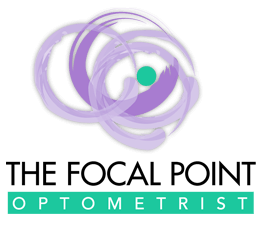Vision Therapy at The Focal Point Optometrist
Is your child's vision preventing them from reading at their grade level?
Does your child avoid reading, rub their eyes or have difficulties focusing and staying on a task?
Undetected visual problems may be keeping them from performing to their potential in school.
What is Vision Therapy?
Vision therapy, or vision training are terms that mean the same thing. Vision therapy is a series of vision exercises and activities that help a child or adult develop important skills that will assist them with focusing, eye movements, or interpreting the pictures that are being sent through from the eye to the brain (vision processing).

Vision Therapy Programs
A vision therapy program consists of weekly visits to the practice and daily activities that must be practiced at home. As Malcolm Gladwell says in the book "Outliers," “Practice isn’t the thing you do once you are good. It’s the thing you do that makes you good.”
The aim of any training program is to practice challenging skills so that they become easier and can be performed more automatically.
An automatic skill is one that does not require concentration or conscious thought. This allows mental effort and concentration to be directed towards other areas such as movement, understanding, comprehension, or problem-solving, facilitating learning. For example, think back to the initial challenges of learning to drive—managing the clutch, brake, mirrors, and traffic while keeping an eye on the road. With practice, driving becomes second nature, even in challenging conditions.
Likewise, a vision therapy program aims to streamline complex visual skills, making them automatic. This optimisation enables individuals to focus their mental energy on various tasks and learning.
Throughout a vision therapy programme, the optometrist or vision therapist can collaborate with teachers and other professionals to ensure a holistic approach to visual development.

How To Know If You Need Vision Therapy
Once an initial consultation has been carried out at the practice, the optometrist will discuss the findings and together a decision is made as to whether vision therapy is going to benefit your visual condition.






